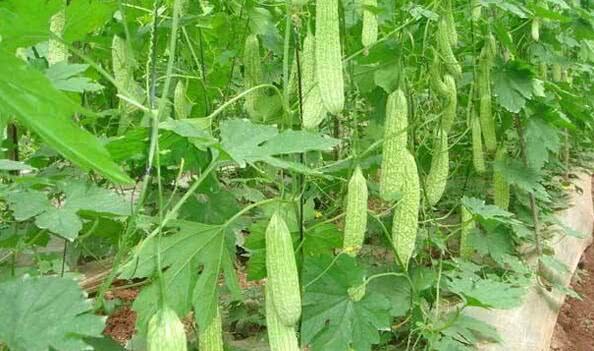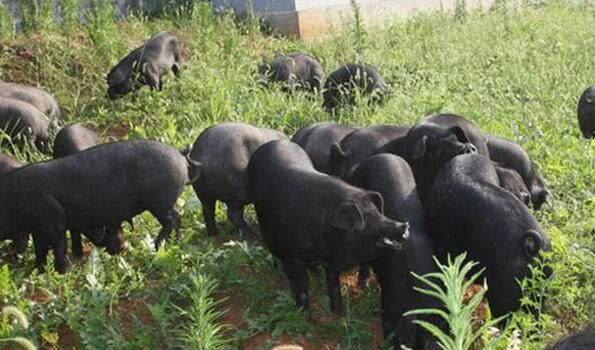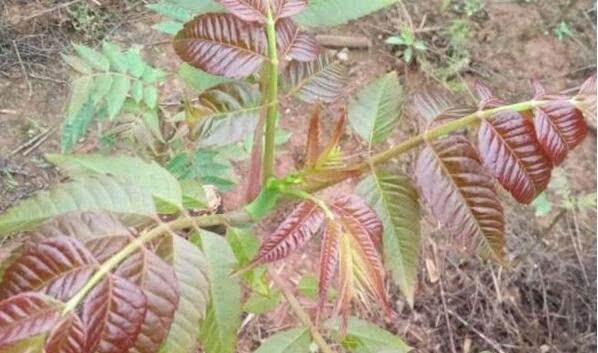Does balsam pear cultivation want to be high-yield?

Generally speaking, if you want to grow balsam pear with high yield, fertilization is very important. Applying more or less will affect the yield of balsam pear, so vegetable farmers must master the main points of fertilization of balsam pear. Here we will take you to learn the six main points of fertilization of balsam pear.
1. Base fertilizer
Basic fertilizer is the most basic condition for the growth of any kind of plant, so the harvest of planting balsam pear is the same. we mainly use farm fertilizer to make the bottom, and then assist in the use of appropriate amount of nitrogen, phosphorus and potash fertilizer. the farm manure needed for planting balsam pear per mu is about 5000 kg, 40 kg of nitrogen fertilizer, 50 kg of phosphate fertilizer and 30 kg of potash fertilizer, which must be evenly mixed and then turned into the soil.
Second, promote seedling fertilizer
Promoting seedling fertilizer is generally a nutrient supply in the planting and topdressing of balsam pear, when we are usually combined with water, which can improve the survival rate of balsam pear seedlings, and at the same time, nutrients can be fully absorbed by balsam pear seedlings, so as to promote the growth of special roots. The amount of fertilizer used to promote seedlings is generally small, mainly urea, about 10 jin of urea per mu, and can add four or five jin of potash fertilizer, which can enhance the resistance of balsam pear seedlings.
Third, growth fertilizer
Growth fertilizer is to wait until balsam pear seedlings grow to about 30 or 40 centimeters, then in order to speed up the growth rate of balsam pear seedlings, shorten its growth period, and thus blossom and bear fruit faster, so we still need to add an appropriate amount of nitrogen fertilizer, or use dung and urine water for watering, at the same time, about five jin of urea and three or four jin of potash and phosphate fertilizer can be added to the feces and urine water, so as to prevent melon seedlings from growing.
IV. Fertilizer for promoting flowers
When balsam pear grows to a certain extent, it will enter the flowering stage, usually about a week before the balsam pear blossoms or at the beginning of flowering, which can prolong the flowering period of balsam pear and improve the fruit setting rate of balsam pear. This time, fertilization is mainly based on phosphate fertilizer and base fertilizer, and an appropriate amount of boron fertilizer can be sprayed at the same time, generally according to the ratio of 3: 2: 1.
Fifth, strong fruit fertilizer
We all know that strong fruit fertilizer is fertilized when the fruit grows to two fingers after fruit setting, which is used to promote the growth of balsam pear. The strong fruit fertilizer is mainly phosphate fertilizer and potash fertilizer, which is fertilized according to 10 jin of phosphate fertilizer and 8 jin of potash fertilizer per mu. Secondly, appropriate amount of foliar fertilizer can be sprayed during this period. At the same time, some biological fertilizers specially used for strong fruit can be used. In this way, the quality of balsam pear will not be affected when the yield is increased.
6. Postharvest fertilizer of early melon
The late fertilizer mainly belongs to the late fertilizer after the first batch of balsam pear harvest, which is mainly to prevent the aging of balsam pear seedlings so as to reduce the yield of balsam pear, so it is necessary to carry out maintenance and fertilization after each balsam pear harvest. It is mainly urea and compound fertilizer, which needs about 20 jin per mu on average. At the same time, it also needs to combine with appropriate amount of phosphate fertilizer and potash fertilizer to fertilize outside the root. This can effectively prevent premature senescence of plants.
- Prev

Large-scale breeding methods and matters needing attention of Yuxi Black Pig
Yuxi Black Pig is a very popular pig breed with good meat taste and high nutritional value. With good economic benefits, the following is about Yuxi black pig large-scale breeding methods and matters needing attention, interested parents can refer to. One.
- Next

When is the seed planted? High-yielding planting and management techniques of Toona sinensis
How to achieve high yield cultivation of Chinese toon planting? Toona sinensis can be said to be one of the more and more popular wild vegetable varieties in recent years. The rich nutrition of Toona sinensis accords with the health consciousness pursued by people at present, and it also has the function of dietotherapy. Let's go."
Related
- Wuhan Hospital Iron Tree Blooming Result Was Instantly Frightened by the Gardener Master
- Which variety of camellia is the most fragrant and best? Which one do you like best?
- What is the small blue coat, the breeding methods and matters needing attention of the succulent plant
- Dormancy time and maintenance management of succulent plants during dormancy
- Minas succulent how to raise, Minas succulent plant pictures
- What are the varieties of winter succulent plants
- How to raise succulent plants in twelve rolls? let's take a look at some experience of breeding twelve rolls.
- Attention should be paid to water control for succulent plants during dormant period (winter and summer)
- Watering experience of twelve rolls of succulent plants
- Techniques for fertilizing succulent plants. An article will let you know how to fertilize succulent plants.

